枣林旱厕,佳县,中国
2019-07-01王辉,彭小松,肖靖等
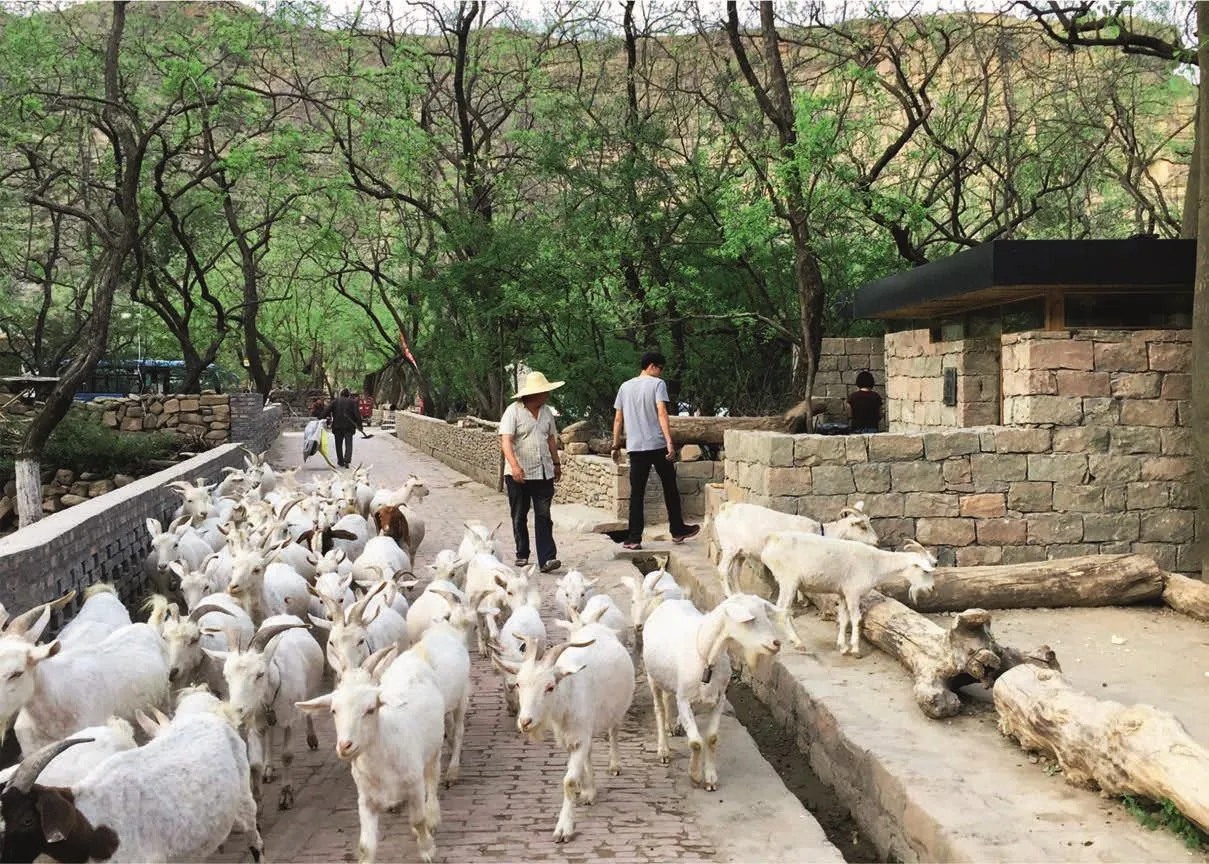
1 古戏台旱厕外景/Exterior view of Toilet of Ancient Stage
对于一个村子或是一座建筑而言,这是一次再微小不过的建造实践,但每当身处其境,总会有一丝触动。她不出众也不完美,却散发着一种场域性的沉着力量;似片儿残垣,又似林中小亭,予人另一种停留。这亦是对陕北佳县古枣园(泥河沟村)全球重要农业文化遗产地保护与建设的一种思考影像。
泥河沟村与中国众多的乡村面临着相似的问题:环境卫生较差。在传统文化的古老的生活方式与文明的现代生活的冲突中显得进退维谷。村内厕所均为传统旱厕,满足当地农业对有机肥的传统需求,但难以满足现代生活所需的无菌,无臭等卫生条件。容易造成传染病的传播,也一定程度上影响着村落的外观环境,对土壤、河水甚至地下水均有潜在污染可能。泥河沟村古枣园生态博物馆旱厕规划设计专项,对当地原有的厕所进行改造,提高卫生间的采光、通风、卫生环境。同时传承与创新利用当地的材料、传统的工艺技术,在延续当地传统文化的同时提升了村民的生活品质。已达到缩小城乡差距和文化传承的目的。改造厕所使用了泥河沟现有的垒石墙作为围护结构,运用枣树枝和柳条编制等生态材料作为顶部通风、采光结构。同时采用了粪尿分离和EM菌粉土技术,通过微生物好氧发酵,降解粪便,除臭、除蝇、除蛆,减少致病菌滋生。操作方便,造价低,粪便降解后亦可作为肥料使用。□
For a village or a building, this is a tiny construction practice, but whenever in the situation,there will always be a touch. She is not outstanding or perfect, but radiates a kind of field-based strength; like a piece of ruins or a small pavilion,giving people another kind of stay. This is also a reflection on the protection and construction of the world's important agricultural and cultural heritage sites in the ancient jujube garden (Nihegou Village)of Jiaxian County, in the northern part of Shaanxi Province.
The village is facing similar problems with many villages in China, and its environmental hygiene is poor. In the clash between the old life style of traditional culture and the modern life of civilisation, it seems to be in a dilemma. Village toilets are traditional dry toilets, to meet the traditional needs of local agriculture for organic fertiliser, but difficult to meet the needs of modern life sterile, odorless and other sanitary conditions.It is easy to cause the spread of infectious diseases,but also to a certain extent affects the appearance of the village environment, soil, river water and even groundwater have potential pollution.Nihegou village ancient jujube garden ecological museum dry toilet planning and design special, the local original toilet transformation, improve the toilet lighting, ventilation, sanitation environment.At the same time, inherit and innovate the use of local materials and traditional technology, while continuing with the traditional local culture to improve the quality of life of villagers. The purpose of narrowing the gap between urban and rural areas and cultural heritage has been achieved.The existing barrier wall in Nihegou was used as the enclosure structure, and ecological materials such as jujube branches and wickers were used as the top ventilation and lighting structure. At the same time, feces and urine separation and EM bacteria silt technology were used to degrade feces,deodorise, remove flies and maggots by microbial aerobic fermentation, and reduce the growth of pathogenic bacteria. It is easy to operate and low in cost, and can also be used as fertiliser after degradation of excrement.□
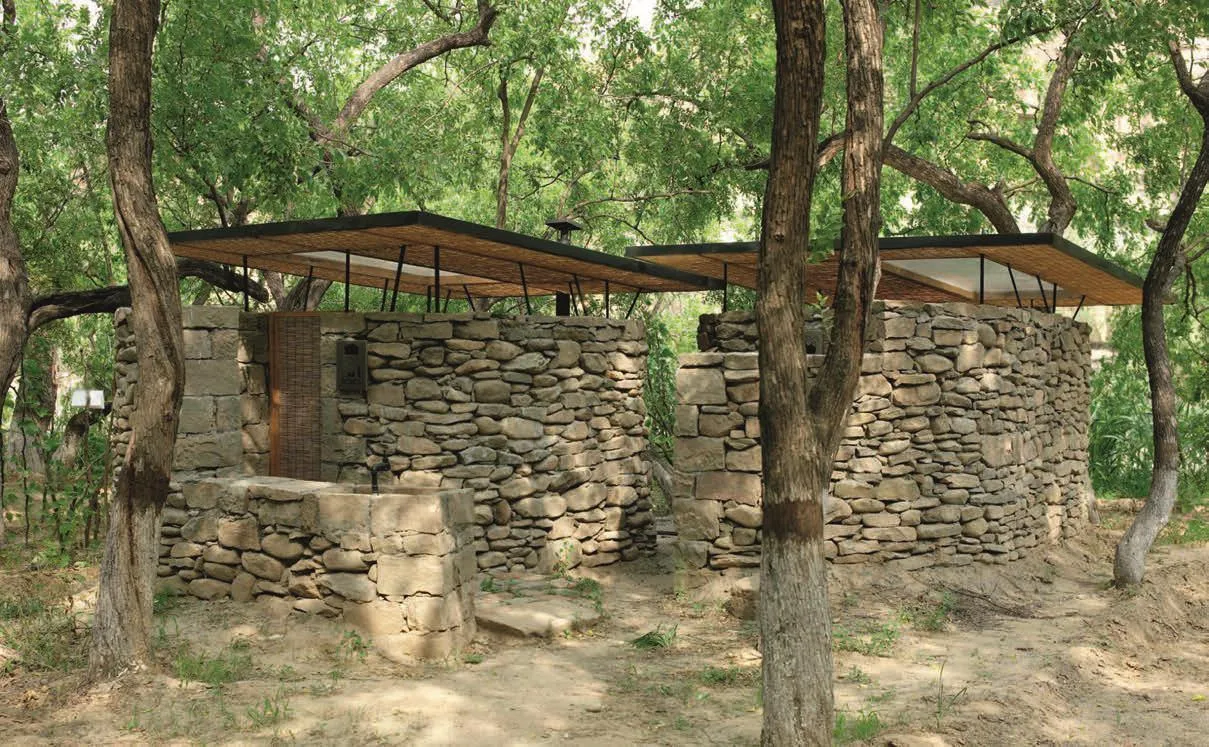
2 枣源碑旱厕外景/Exterior view of Toilet of Inscription of Date Gardens
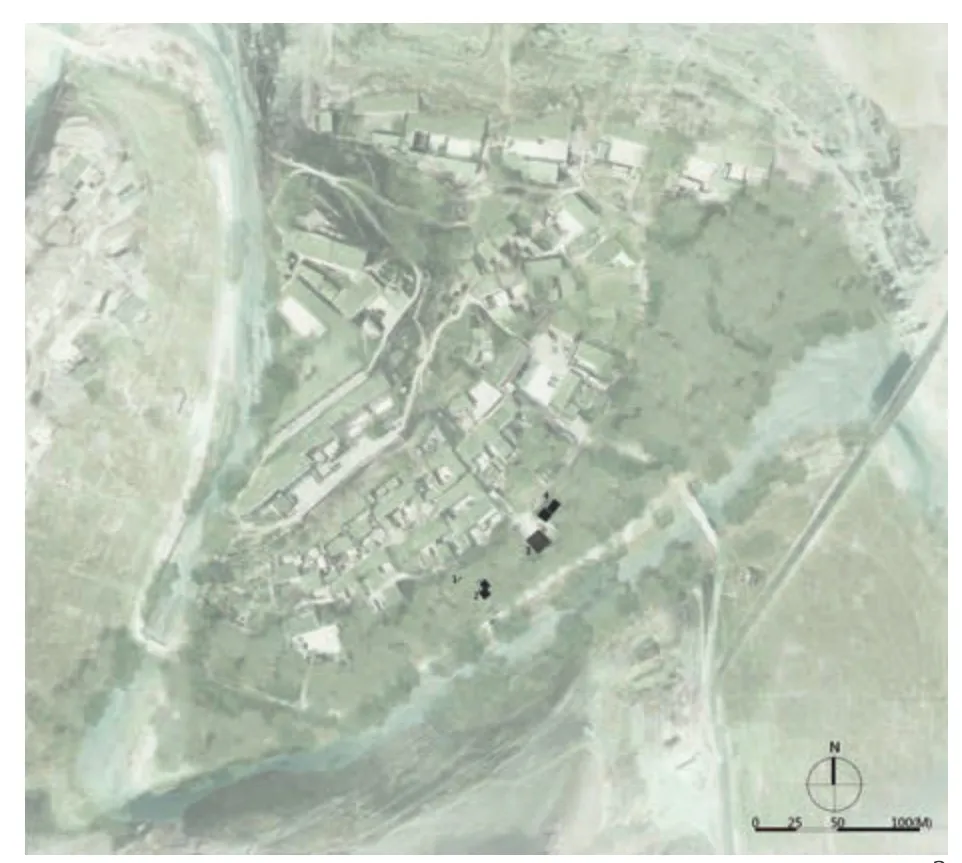
3 总平面/Site plan
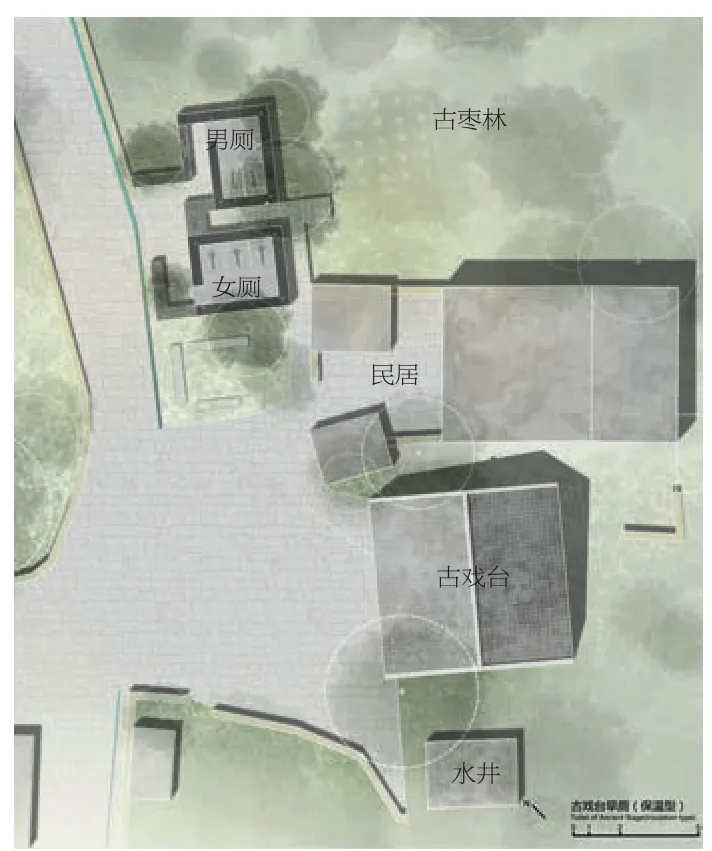
4 古戏台旱厕平面/Plan of Toilet of Ancient Stage
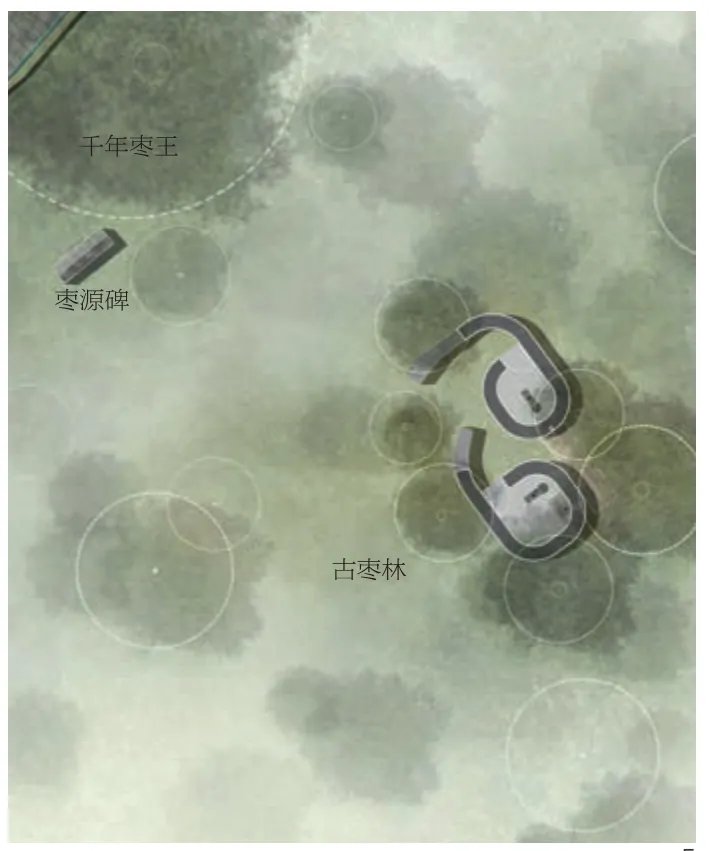
5 枣源碑旱厕平面/Plan of Toilet of Inscription of Date Gardens
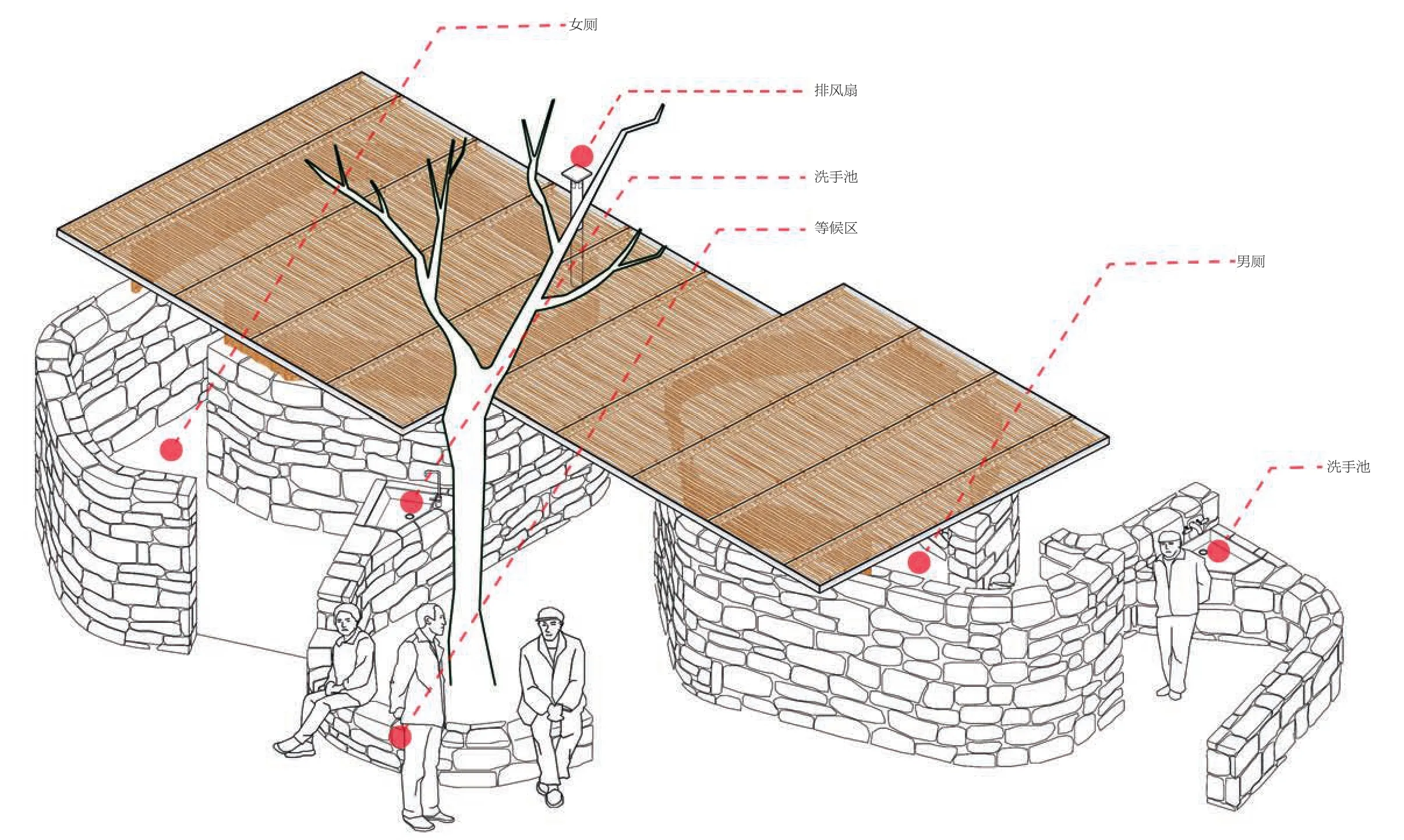
6 枣源碑旱厕轴测/Axonometric of Toilet of Inscription of Date Gardens
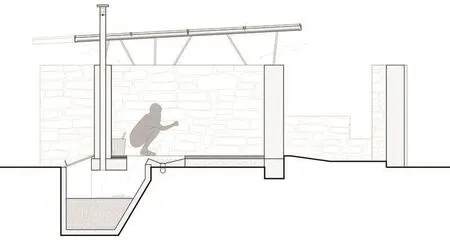
7 剖面/Section
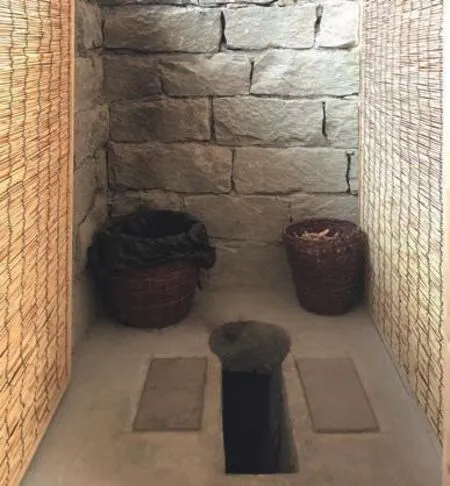
8 古戏台旱厕男厕/Men's toilet of Toilet of Ancient Stage
项目信息/Credits and Data
地点/Location: 陕西省佳县泥河沟村/Nihegou Village, Jia County, Shaanxi Province, China
主持建筑师/Principal Architects: 唐勇,何颂飞/TANG Yong, HE Songfei
设计团队/Design Team: 杨秉鑫,孔祥麟,林艺苹,张思露/YANG Bingxin, KONG Xianglin, LIN Yiping, ZHANG Silu基地面积/Site Area: 30m2(枣源碑旱厕-开敞型/Toilet of Inscription of Date Gardens-open type),44m2(古戏台旱厕-保温型/Toilet of Ancient Stage-insulating type)
建筑面积/Floor Area: 14m2(枣源碑旱厕-开敞型/Toilet of Inscription of Date Gardens-open type),24m2(古戏台旱厕-保温型/Toilet of Ancient Stage-insulating type)
材料/Materials: 本地石材,松木,苇帘,方钢,螺纹钢等/Local stone, pine, reed screen, square steel, steel raber,etc.
造价/Cost: 2万人民币(枣源碑旱厕-开敞型)/20,000 CNY (Toilet of Inscription of Date Gardens-open type),5万人民币(枣源碑旱厕-开敞型)/50,000 CNY (Toilet of Ancient Stage-insulating type)
设计时间/Design Period: 2015.07-2016.10
竣工时间/Completion Time: 2016.12
摄影/Photos: 林艺苹,唐勇,杨秉鑫/LIN Yiping, TANG Yong, YANG Bingxin
评论
王辉:设计在运用各项适宜技术解决中国传统乡村环境卫生问题的同时,通过各种地方性材质与工艺技术的应用以及相对理性简约的空间建构,充分展现了对于传统地域文化的诠释与再发展。设计与所在环境的文脉建立了较为紧密的联系,为当地人们提供了一个具有时代感与场所记忆的生活空间,提醒人们在最接地气的功能性建筑中同样可以蕴含着建筑的意义和感性品质。
Comments
WANG Hui: In the process of addressing environmental hygiene problems in traditional Chinese countryside by applying various suitable technologies, the design fully showcases the understanding and redevelopment of traditional local culture through application of both the local materials and crafts in a relatively rational and simple spatial structure. The design establishes a close connection with the cultural context of its surrounding environment and provides a living space with both the sense of contemporary era and the site memory for local residents, which reminds people that the most functional construction can also reflect architectural significance and perceptual quality. (Translated by QIAN Fang)
彭小松:该项目尊重当地乡土传统的建造方式,以生态材料制作围护结构、遮阳构件以及装饰面层,单体形式简洁却不失风貌,与周围村落形态紧密结合。在达到较好使用条件的同时,尽量降低造价和节省围护费用,符合乡村建设的基本准则与可持续理念。尤其是该厕所形体与村落街道的融合,在提供基本生活功能的基础上,形成新的村落多功能空间,改善了村民生活基础设施,也为提升整体空间形态的丰富性提供了有效的尝试与创新。(肖靖 校)
PENG Xiaosong: The project respects the local rural traditions of construction and uses ecological materials to make envelope structure, shading components and decorative coatings. The building itself is simple yet elegant, with a close formal relation to surrounding villages. While achieving better conditions of use, to minimise construction and maintenance costs is in line with fundamental principles of rural construction and those of sustainability. In particular,the toilet interacts with village streets, provides basic living functions, and defines new multi-functional spaces. Bettering the infrastructure of rural life, it seeks effective way-outs and innovation to diversify the overall spatial morphology.(Translated by HAN Li, proofread by XIAO Jing)
